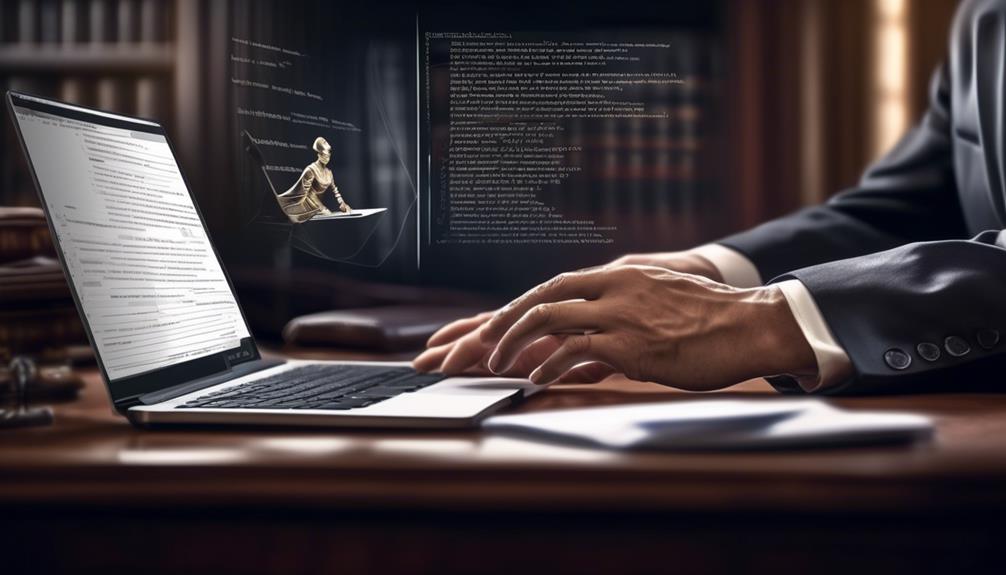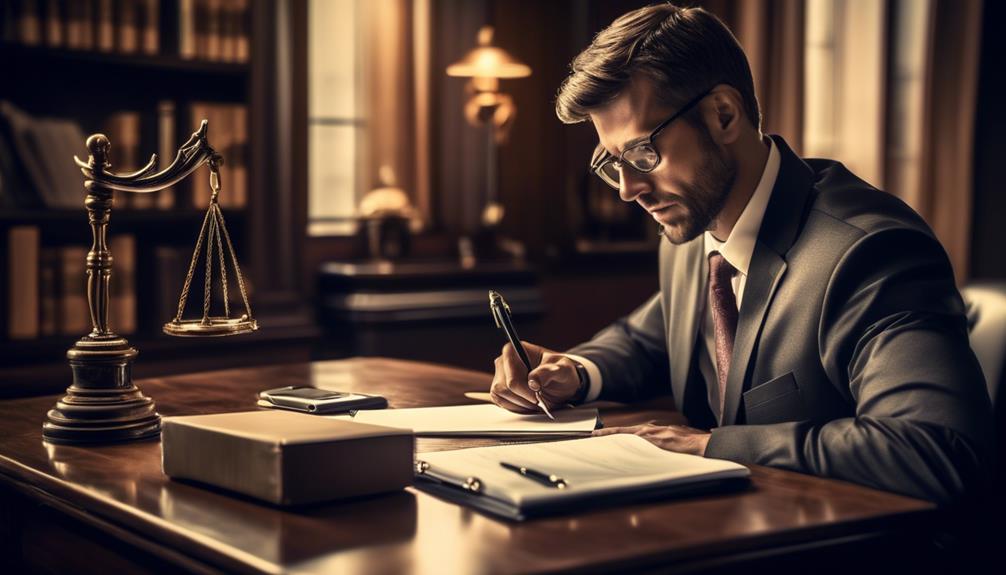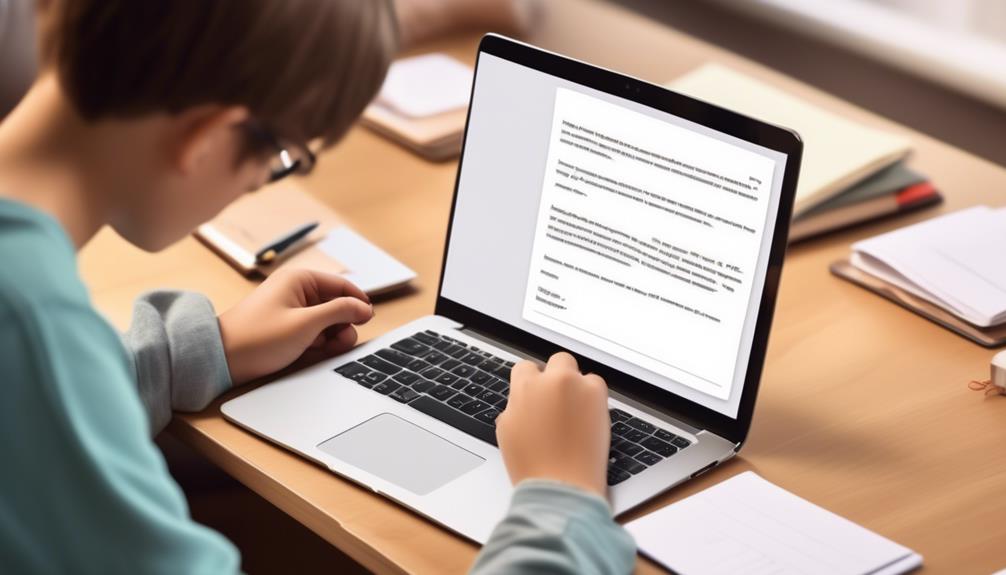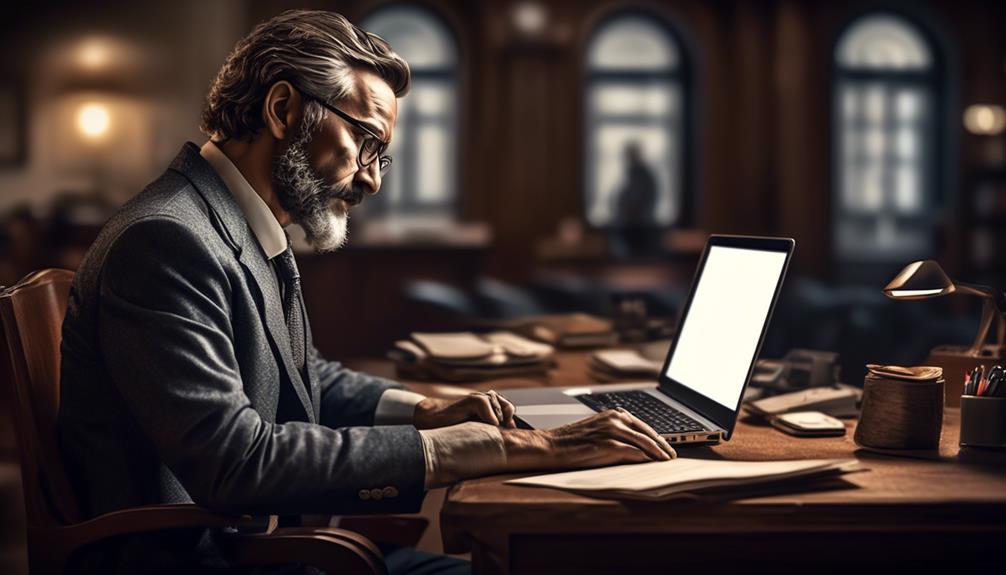It’s widely acknowledged that in the realm of law, email serves as the main mode of communication, with 86% of attorneys reporting that they often receive communications from clients through email.
But, have you ever wondered how to craft the perfect email to a lawyer that not only grabs their attention but also ensures that your message is clear and professional?
Well, I've got some insights on how to navigate this crucial aspect of legal communication that can make all the difference in your professional relationships. Whether you're seeking legal advice or collaborating on a case, understanding the etiquette and best practices for composing emails to lawyers is essential.
So, let's dive into the key elements that can elevate your email game and leave a lasting impression on legal professionals.
Key Takeaways
- Use a specific project or matter name followed by the actual subject in the subject line to ensure clarity and priority.
- Maintain professionalism and clarity in communication by using appropriate salutations and a respectful tone.
- Keep the email body brief and to the point, using formatting techniques to highlight important points.
- Proofread and polish the content for grammar, punctuation, clarity, and coherence to ensure effective communication.
Crafting the Subject Line
Crafting the subject line for an email to a lawyer is essential for clearly conveying the purpose or topic of the email. It's imperative to use a specific project or matter name followed by the actual subject in the subject line to ensure that the lawyer immediately understands the context of the email. For example, using a subject line like 'Project Terminator: Skynet Has Become Aware' provides a clear indication of the project or matter being referenced.
Additionally, it's crucial to ensure that email settings require a subject line before sending, as this helps in maintaining professionalism and clarity in communication.
When crafting the subject line, it's important to use it as an opportunity to provide a concise summary of the email's content. This allows the lawyer to quickly grasp the essence of the email and prioritize their response accordingly.
Addressing the Lawyer

When addressing a lawyer in correspondence, it is important to use the appropriate salutation and maintain a professional tone throughout the communication. The table below provides guidance on addressing the lawyer in various forms of communication:
| Type of Communication | Salutation |
|---|---|
| Letter or Email | Dear Mr./Ms. (Surname) |
| Conversation | Mr./Ms. (Surname) |
| Social Correspondence | Mr./Ms. (Full Name) and Spouse's Full Name, if any |
It's crucial to maintain a respectful and professional tone when addressing the lawyer, especially when discussing legal documents or working together on a case. In email communication, it's advisable to use an appropriate closing, such as 'Best', 'Regards', or 'Thanks', to conclude the message. Additionally, it's important to use friendly and positive language in the communication, avoiding a robotic or emotionless tone. By following these guidelines, you can ensure that your correspondence with the lawyer is conducted in a manner that is both professional and respectful.
Structuring the Email Body
Addressing a lawyer with the appropriate salutation sets the tone for professional communication.
Now, in structuring the email body, it's important to maintain this professionalism and conciseness while clearly conveying your message. When composing the body of the email, it's crucial to keep it brief and to the point.
Use the recipient's first name followed by a comma to start the email, and avoid unnecessary wordiness. Consider using formatting techniques like underlining or bolding to highlight important points, such as key dates or specific requests.
In addition, maintain a constructive and cooperative approach by avoiding accusatory language. Clearly outline the purpose of the email, whether it's seeking legal advice, providing necessary information, or requesting a meeting.
If you're representing a client, be sure to clearly state that you're contacting the lawyer on behalf of the client and include relevant details regarding your case.
Close the email with an appropriate sign-off, such as 'Best,' 'Regards,' or 'Thanks,' followed by your full name and contact information.
This structure ensures that your email is professional, concise, and effectively conveys your message to the recipient at the law firm or opposing counsel regarding your case.
Proofreading and Polishing

After ensuring that the email body is structured with professionalism and conciseness, the next crucial step is to meticulously proofread and polish the content for clarity, coherence, and effectiveness.
When proofreading and polishing the email, we need to pay attention to several key aspects:
- Review and revise the content for grammar, punctuation, and spelling errors. These mistakes can detract from the overall professionalism of the email and may convey a lack of attention to detail.
- Ensure consistency in language, formatting, and tone throughout the document. This consistency is essential for maintaining a professional and polished appearance.
- Check for clarity and coherence in the writing, making necessary adjustments for better flow and understanding. A well-structured and coherent email is more likely to be well-received and understood by the recipient.
- Look for repetitive words or phrases and replace them with synonyms to enhance the overall quality of the writing. This helps to avoid monotony and demonstrates a broader vocabulary.
Following Up
We appreciate the opportunity to follow up on our previous communication and discuss the next steps in resolving the matter at hand.
Following up on our previous correspondence regarding the legal issue, we want to ensure that all necessary information is available for review. We'd like to make sure that you have had a chance to review the documents and evidence provided.
This follow-up is aimed at ensuring that all parties involved are aligned and that we can proceed efficiently. We value the time and attention that has been given to our case thus far and are eager to move forward in a productive manner.
Please let's know if there are any additional details or clarifications needed from our end. We're committed to working collaboratively with you to reach a resolution. It's important to us that the next steps are clearly outlined, and we're open to any guidance or insights you may have regarding the best course of action.
Thank you for your attention to this matter, and we look forward to your guidance on the next steps.
Frequently Asked Questions
How Do You Address a Lawyer in an Email?
We address a lawyer in an email by using 'Dear Mr./Ms. (Last Name)' as the salutation. It's important to maintain a professional and respectful tone, avoiding informal language or nicknames.
In the body of the email, we continue to refer to the lawyer as 'Mr./Ms. (Last Name)'.
Always proofread for correct grammar and spelling before hitting send. These practices demonstrate proper etiquette and respect for the lawyer's professional standing.
How Do You Write a Formal Letter to a Lawyer?
When writing a formal letter to a lawyer, we must ensure clarity and professionalism. Use a formal salutation and address the lawyer by their appropriate title.
Clearly state the purpose of the letter and provide necessary details. Employ a respectful and courteous tone throughout the letter.
Ensure that all legal matters are accurately addressed and presented. Utilize a rhetorical question to emphasize the importance of thoroughness and precision in the communication.
How Do You Start a Legal Email?
When starting a legal email, we ensure to include a clear and specific subject line.
We address the recipient by their first name with a comma and maintain a concise and well-formatted body.
We also choose an appropriate closing and always double-check for attachments.
Using friendly and positive language fosters a sense of collaboration.
These practices help in creating effective and professional legal correspondence.
How Do You End an Email to a Lawyer?
We typically end an email to a lawyer with a professional closing such as 'Best', 'Regards', or 'Thanks'.
It's important to maintain a formal tone and language throughout the email and to clearly state the purpose in the subject line.
Keeping the body concise and avoiding unnecessary wordiness is also crucial.
These guidelines help ensure effective communication with legal professionals.
Conclusion
In conclusion, writing an email to a lawyer requires attention to detail and professionalism.
By crafting a clear subject line, addressing the lawyer respectfully, providing context in the email body, and proofreading for errors, you can ensure effective communication.
Remember, crossing your t's and dotting your i's is key to making a good impression.
So, take the time to polish your email before hitting send.









